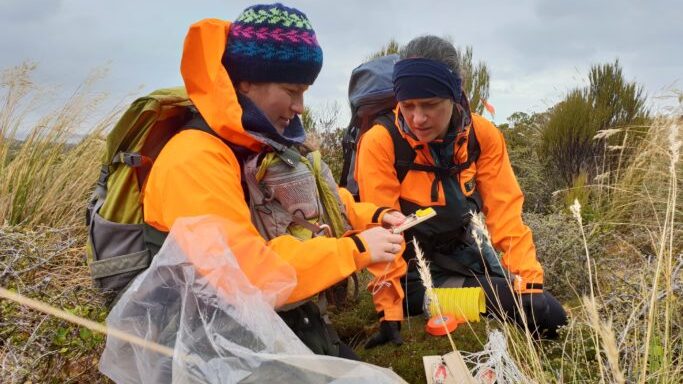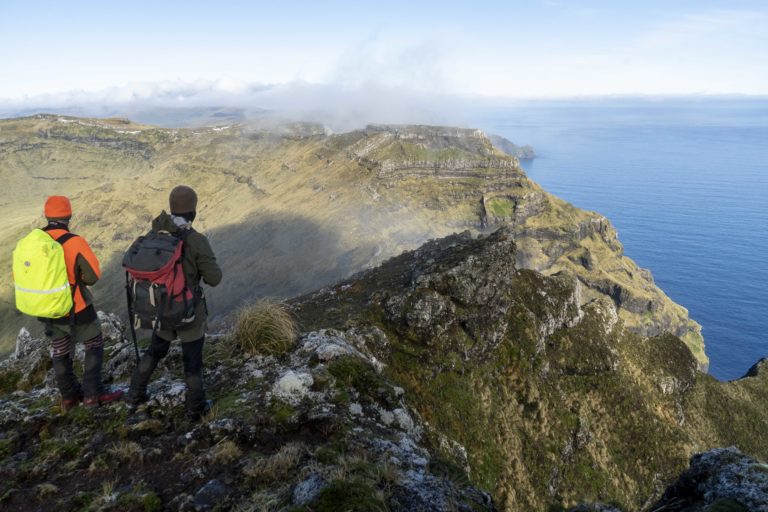This week marks the publication of the Maukahuka Pest Free Auckland Island project report on the technical feasibility of eradicating pigs, cats and mice from Auckland Island.

This is the most significant milestone since the eradication of pigs from the island was first raised in 1982. Over the last four years, the Department of Conservation and Ngāi Tahu have been working with many others to address three key questions: Why do it? Can it be done? What will it take?
Why do it is the easy part
The Auckland Islands are the most biologically rich island group in the New Zealand Subantarctic, but 200 years of damage from pigs, cats and mice have reduced the main island – Auckland Island – to a shadow of its former self and its biodiversity is now sparse. Island eradications offer the biggest conservation gain per dollar spent and result in permanent change. A pest free Auckland Island would offer a 46 000 hectare haven to 38 native species of bird, nine of which are endemic to the island.
The other two questions are harder to answer. Maukahuka is pushing the frontiers of island eradications in terms of target species, scale, complexity, climate and remoteness. A desktop study identified questions and issues that have been addressed through field trials, both on Auckland Island and the mainland. Twelve trips to the island involving 57 people and four years of boots on the ground have tested methods, carried out research and helped develop the tools required for this project.
So can it be done? In a word: yes.
What will it take?
For the pig eradication, a multi-layered approach with overlapping tools of increasing aggressiveness is required, from traps and feeders to aerial hunting with a thermal camera to ground hunting with dogs. The mouse eradication requires a rethink of best practice: half the usual bait application rate, sown during the summer rather than the winter to ensure the 487 tonnes of bait needed can be applied within the short weather windows expected.
The eradication of cats also requires a range of tools: secondary poisoning from the mouse eradication; a cat-specific aerially applied toxic bait; a network of trail cameras to identify survivors; and ground hunters to mop them up. Not to mention biodiversity monitoring throughout, and the infrastructure and logistics required to support a ten-year project.

Where to now?

Maukahuka was paused in April 2020 due to the financial impacts of Covid-19. The team have completed operational planning as far as possible so the project can be picked up easily once financial conditions allow.
In the meantime, a new National Eradication Team has been established within DOC to support progress towards Aotearoa’s predator free objectives, including the development required for Maukahuka: infrastructure solutions for remote working; thermal camera technology and capability; bait buckets geared to applying bait at low sow rates; AI software that can identify cats in trail camera images and an aerial toxin for cats.
All these tools will have flow on benefits for conservation across Aotearoa and are key to building the eradication efficiency needed for Predator Free 2050 and the increasing scale of projects, such as Predator Free Rakiura.
The Maukahuka team would like to say a massive thank you to everyone who supported the project, it has been a fantastic example of the power of collaboration. Publication of the feasibility report provides the opportunity to share what has been learnt. After 30 years of dreaming and four years of hard work we’re poised, when the time is right, to take the next step to a Predator Free New Zealand, and the last step to a predator free New Zealand Subantarctic.

